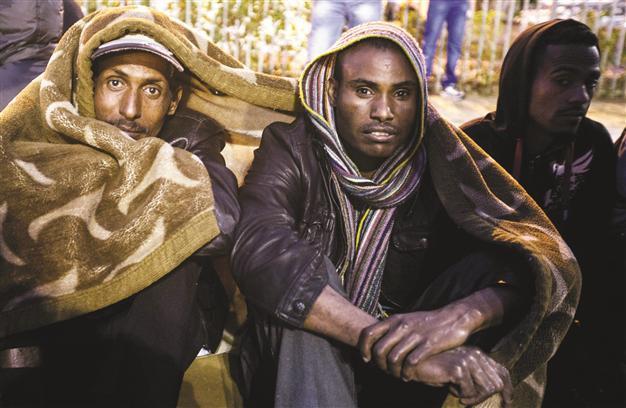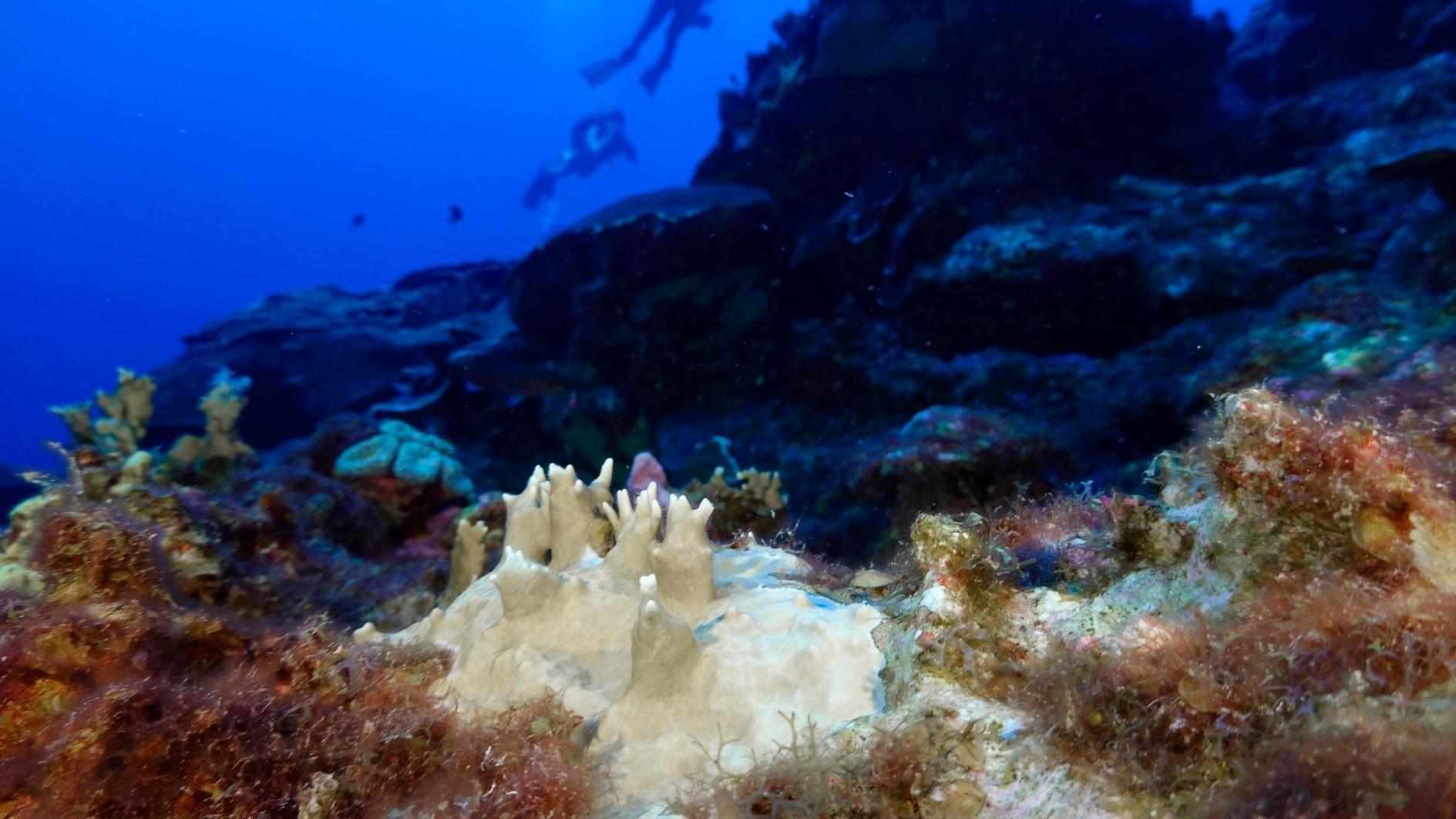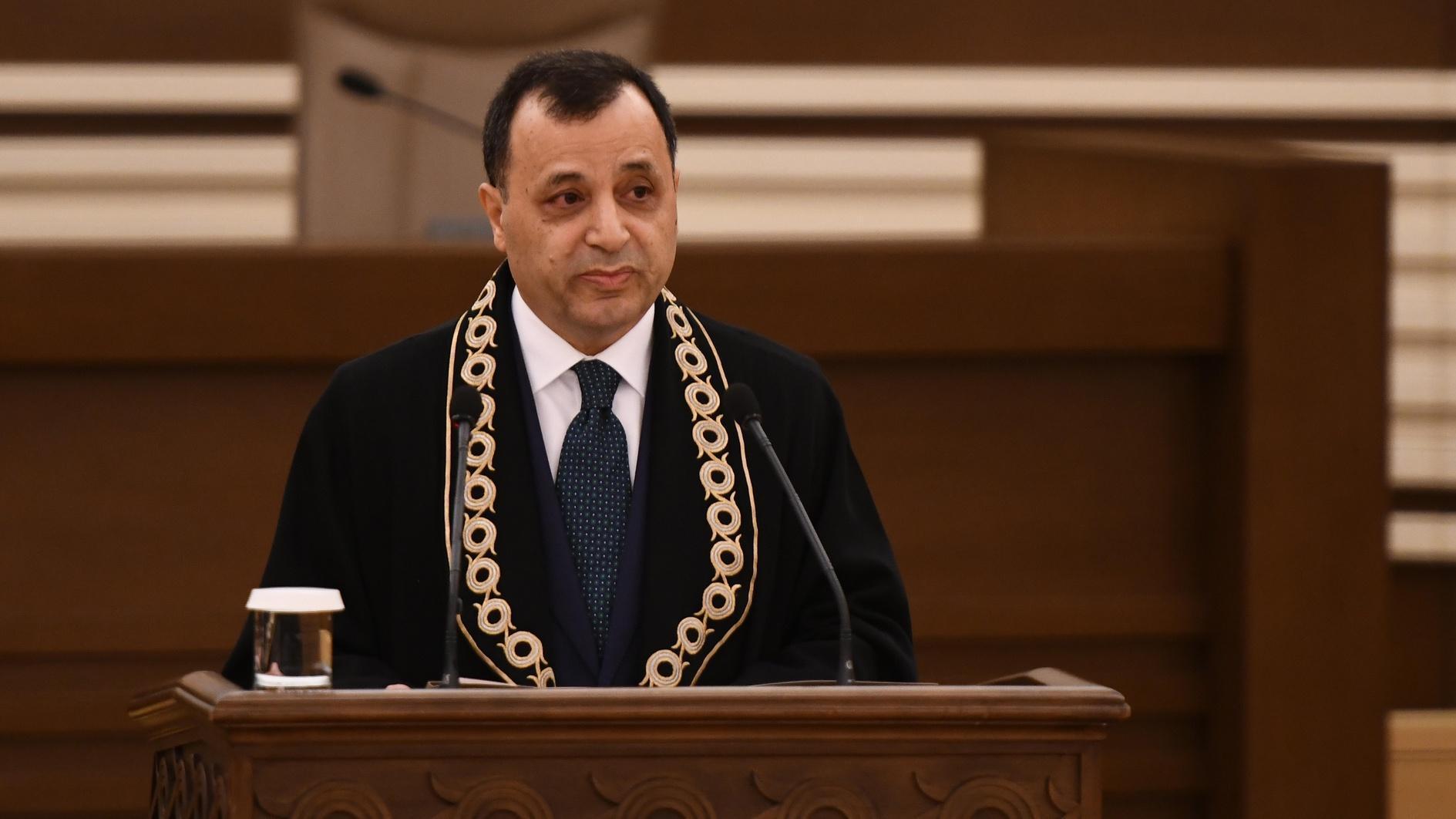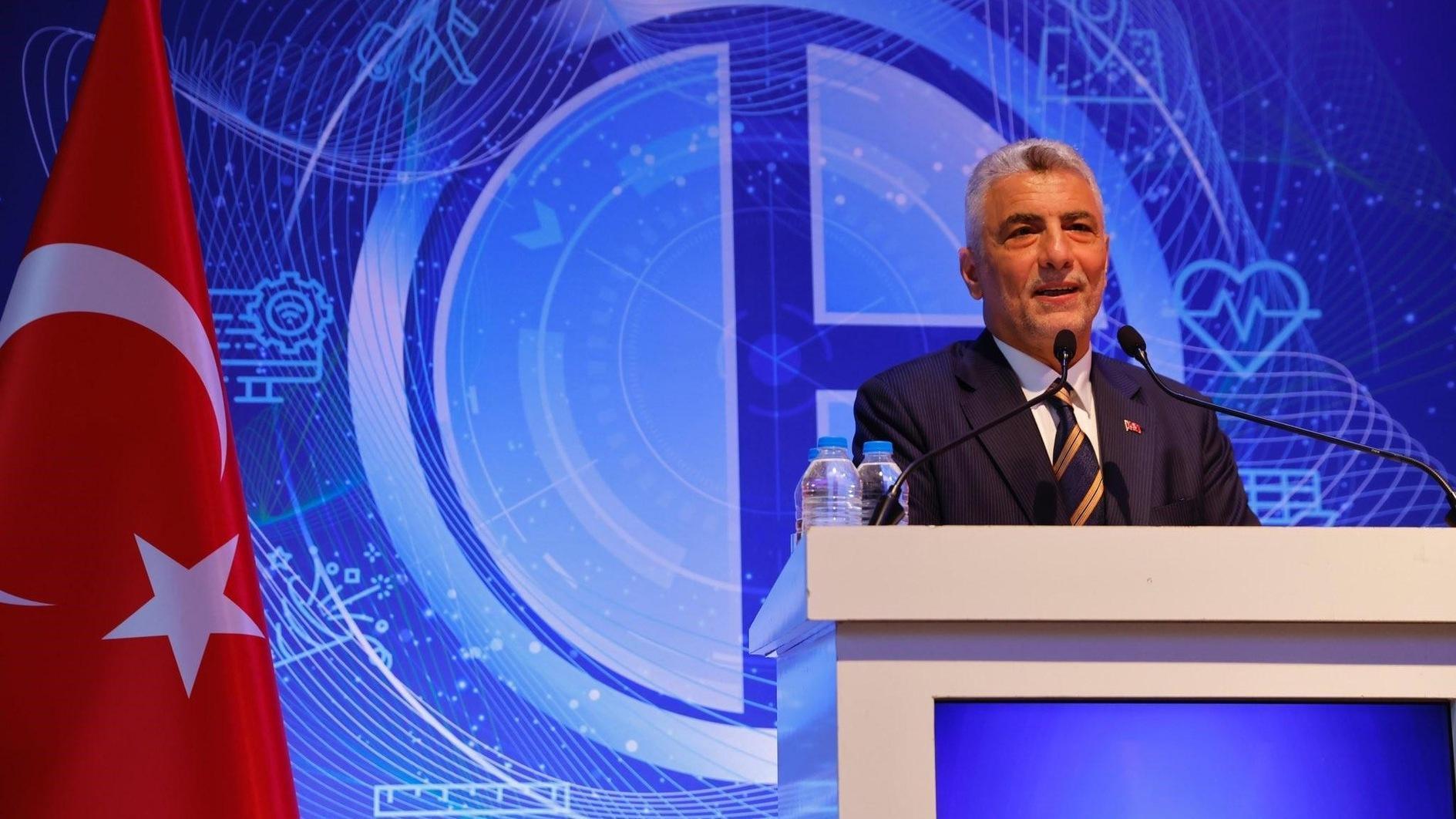Human trafficking from local to global

African asylum seekers use blankets to protect themselves from the cold during a protest. AFP phot
First of all, please allow me to thank the organizers of this forum, especially President Dr. Akkan Suver of the Marmara Group Foundation, for the invitation to participate in the 17th Eurasian Economic Forum.We live in a very restless world. Practically each day brings us news of new trouble spots of violence in different parts of the world. Among other things, this creates preconditions for human trafficking.
Estonia has ratified the Palermo protocol that complements the U.N. Convention against Transnational Organized Crime, and in our actions we proceed from the following definition of the protocol:
“‘Trafficking in persons’ shall mean the recruitment, transportation, transfer, harboring or receipt of persons, by means of the threat or use of force or other forms of coercion, of abduction, of fraud, of deception, of the abuse of power or of a position of vulnerability or of the giving or receiving of payments or benefits to achieve the consent of a person having control over another person, for the purpose of exploitation.”
This definition encompasses both domestic and international human trafficking.

Arnold Rüütel, Former Estonian President
According to the U.N., the labor of about 12.3 million slaves is employed in the present-day world. Twenty percent of these are illegal immigrants.
Asia is the most problematic in the world when it comes to this issue. There, around 10 million people rank as slaves. In Latin America the respective figure is around 1.3 million, and in Africa, it is around 660,000.
The majority of slaves are women and children. Child slavery is increasing most rapidly in those regions where armed clashes are taking place between ethnic and religious groups. There are around nine million child slaves in the world who are employed as beggars, prostitutes and soldiers, as well as unskilled workers in factories, plants, mines, etc. The only payment that they receive for such work is food and shelter. According to the Palermo definition, a person under the age of 12 is considered to be a child.
According to Eurostat data, altogether, 9,528 victims of human trafficking were identified among the 27 member states of the European Union in 2010. From 2008–2010 alone, this figure rose by 18 percent. The majority of the victims (80 percent) were female.
The preliminary data for 2013 indicate that the number of crimes related to human trafficking continues to rise. In addition to prostitution, forced crimes are committed.
In 2012, the European Commission adopted the European Union Strategy towards the Eradication of Trafficking in Human Beings 2012–2016.
This strategy is based on five priorities:
- The identification, protecting and assisting of victims,
- Prevention,
- Making it easier to file charges against human traffickers,
- Cooperation and a coherent policy to fight against traffickers,
- Increasing people’s awareness of potential dangers, and an immediate and effective response.
The number of crimes related to human trafficking appears to be on the rise in Estonia as well. In 2013 this figure was 43.
The number may seem insignificant, but once you take into account the entire population of the European Union, this indicator for Estonia is relatively high.
In order to achieve greater legal clarity, human trafficking was criminalized by Estonian legislation in 2012. When combating this problem, we proceed from the national plan to reduce violence.
Estonia has been criticized for not paying enough attention to international human trafficking problems. We have drawn serious conclusions from this criticism.
We support the work of the U.N. Human Rights Council.
Similarly, we support the incorporation of the gender aspect into all U.N. initiatives, and fully support the newly-created U.N. Entity for Gender Equality and the Empowerment of Women (or U.N. Women).
Permit me to add some thoughts of my own also on involuntary migration.
According to international statistics, involuntary migration has never before been as extensive in the world as in recent years.
According to estimations, in 2012 there were:
- 15.4 million refugees,
- 937,000 asylum seekers,
- 28.8 million internally displaced people forced to flee their homes to another place in their country (involuntary internal migration).
This is also directly related to the European Union, especially through external migration.
In 2011, 7.5 million people lived in the European Union who originated from outside its member states.
The now independent former Soviet republics recall that due to internal migration eleven to twelve million people a year changed their place of residence. Immigration to Estonia was around 80,000 people a year. Following World War II, Estonia’s net migration rose by 0.5 million people. Before the restoration of independence, the Estonian immigration act was adopted in 1990, regulating immigration to our republic.
After the restoration of independence, Estonia faced the danger that its indigenous population would become a minority in its own homeland. The share of those who spoke other languages had risen to above 40 percent. In order to alleviate the situation, the Estonian Remigration Fund was created. Its financial resources were used to build homes for those single people and families who expressed the wish to return to their country of birth. This step significantly helped Estonia stabilize the ratio, and to do so in favor of its indigenous population.
Estonia shares European values and customizes its migration policy in accordance to this. We support the creation of a common European asylum system. This is a long-term goal that aims to ensure the asylum seekers an as similar as possible treatment in the European Union’s member states. Yet at the same time, we must take into account that each member state has a certain capacity to integrate immigrants, and this cannot be disregarded.
Common will
The European Union, including Estonia, has become a target for immigrants from various parts of the world. This has resulted in a constant increase of pressure on the amount of immigration. The attempts at illegal immigration both in the European Union as well as Estonia demonstrate a growing trend. In 2013 alone, the Estonian Police and Border Guard Board discovered 267 people who tried to illegally cross the border with the aim of immigration.
Due to our geographic location, Estonia is a country that may be used for transit migration.
What could be said in conclusion? Human trafficking and involuntary migration, which is directly linked to it, are problems that, in order to be solved, demand a common will and joint efforts by all of the world’s states.
Based on my own belief, a possible solution to the problem of involuntary migration could be a shift from involuntary migration (both domestic and external) to an internally regulated migration, creating the means and conditions for people to return to their former homes if they wish to.
We live in the 21st century and must admit that the slave trade is literally flourishing.
We expect a more effective intervention from the U.N. in order to solve this problem. This requires the joint efforts of all U.N. member states.
This is the speech by Arnold Rüütel at the 17th Eurasian Economic Summit in Istanbul.
















